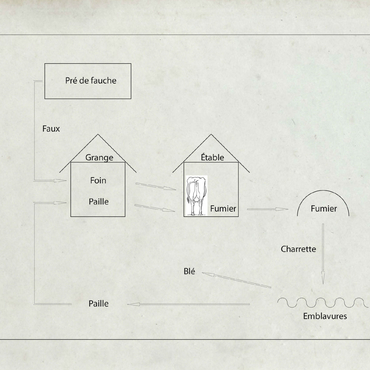
- Home
- The Roman villa: source texts and archaeological evidence
- What is a villa ?
- Agriculture in Antiquity
To understand Roman agriculture, it is best to use the systems concept developed by modern geographers and agronomists. Thus, we can approach agriculture in Antiquity at a plot level (land system), at a farm level (production system), or at a regional level (agrarian system). This approach emphasises the interactions between the natural surroundings and the socio-cultural sphere, agricultural techniques and the production economy.
Agrarian systems in Antiquity were based on the connection between cereal-growing and animal husbandry. A two-field rotation system was used for arable lands, the ager, which were alternately planted with grain crops and left fallow. Cattle played a key role as draft animals and as a means of transportation, but also in providing manure for the ager from adjacent untilled grazing land, or saltus. Wine-growing, arboriculture and cultivation of edible plants took place in the hortus. In the allocation of plots on a farm, those farthest from the centre were those of the silva(forest), where wood for construction and fuel was gathered.
This basic model was followed in most regions of the Roman Empire, and historians have explored the question of yield levels in Antiquity. Landed estates were agricultural businesses that combined food self-sufficiency with the development of crops grown for speculative reasons.
Associated media
Open Media Library

Soc d'araire assymétrique

Soc d'araire

Calendrier rustique de Saint-Romain-en-Gal

Garniture de bêche

Pioche-pelle

Serpe à crochets à soie plate

Calendrier rustique de Saint-Romain-en-Gal

Faux

Forces à tondre

Les systèmes agraires à jachère et culture attelée légère, avec élevage et pâturage associés
